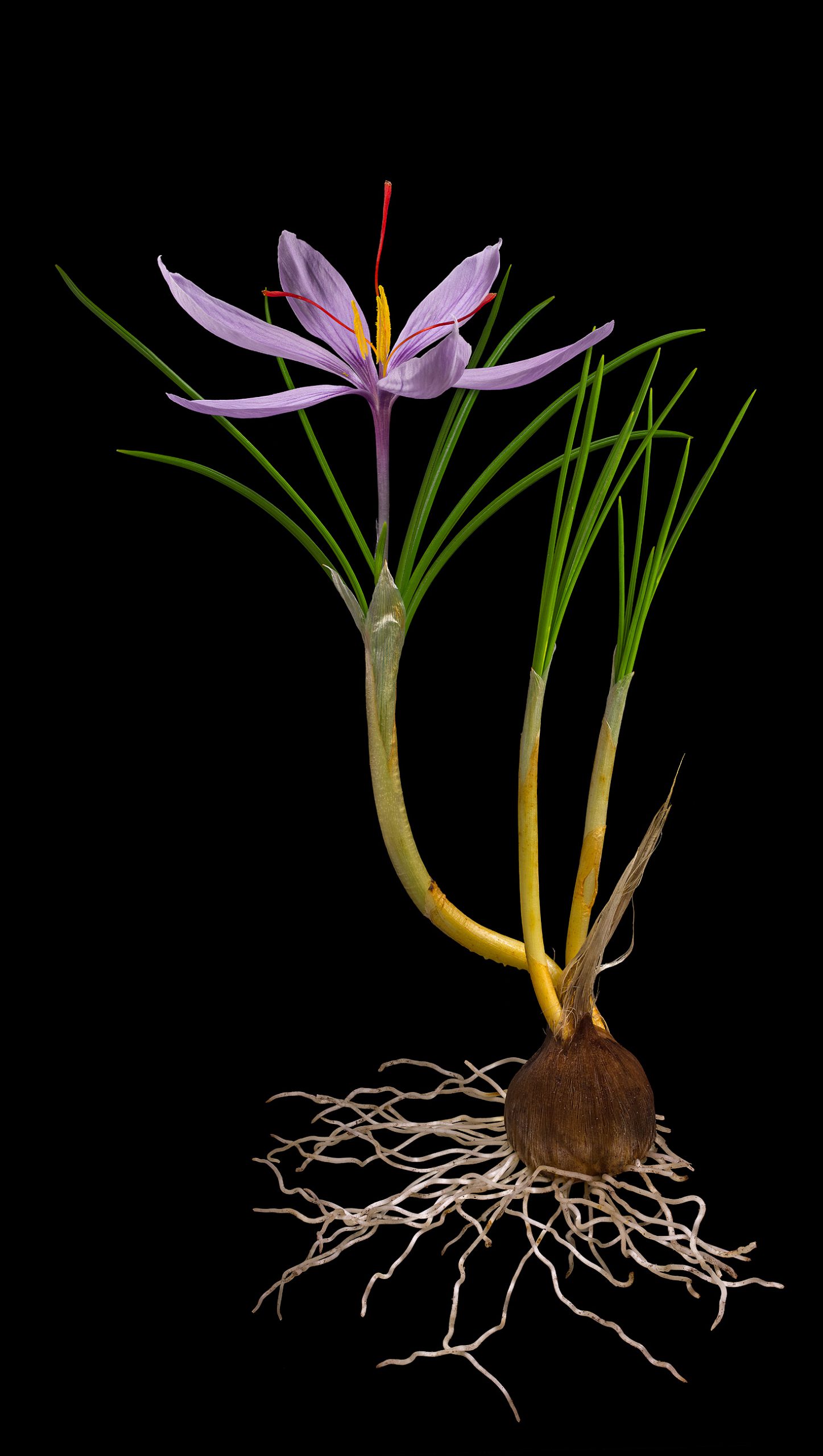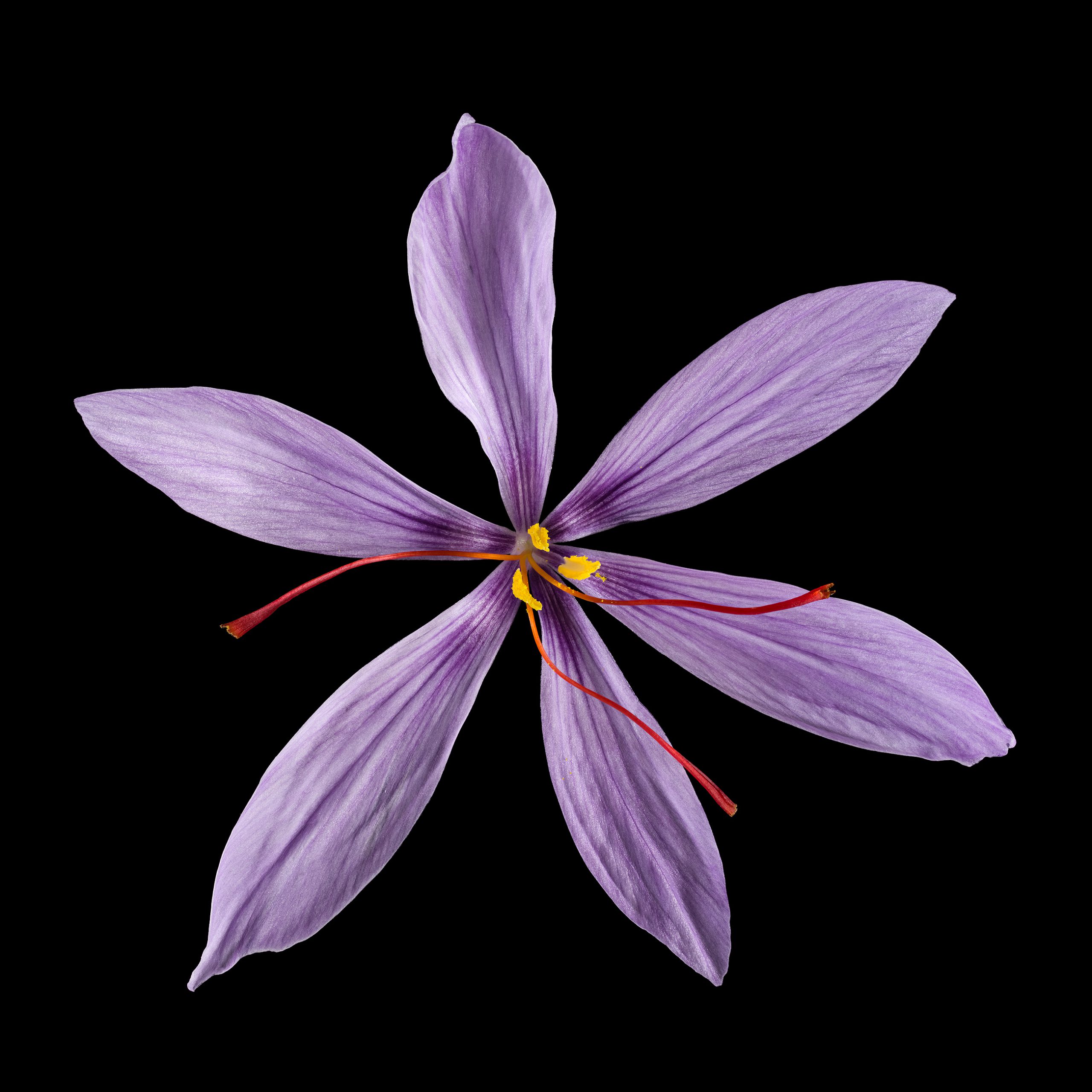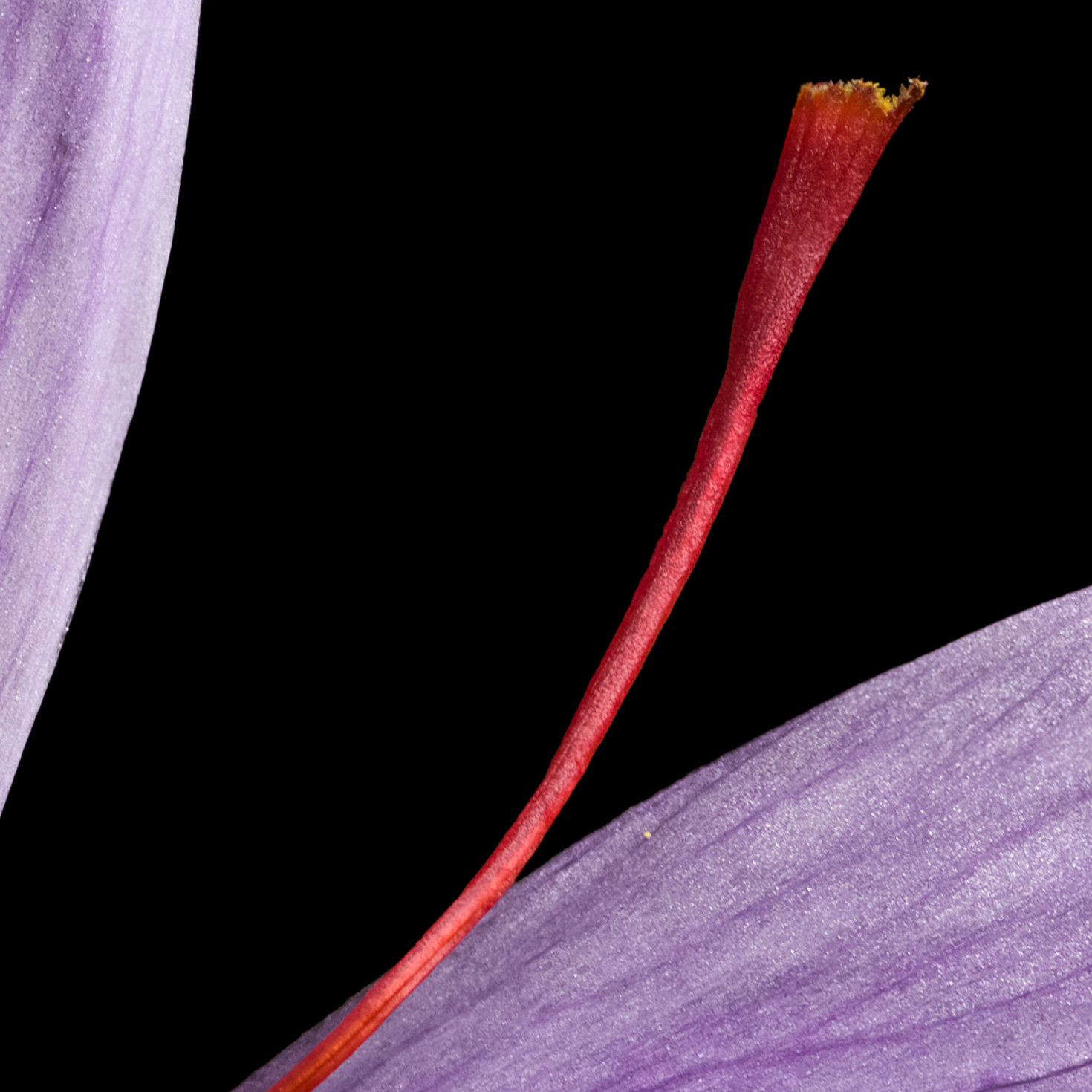Saffron: Crocus sativus
The most luxurious spice in the worldSaffron belongs to the crocuses (Crocus sp.). The species Crocus sativus is a triploid mutant of C. cartwrightianus and can no longer reproduce sexually by seed, but only vegetatively by tuber division.
Saffron, the “red gold”, is a spice extracted from the flowers of the saffron crocus. It colours and flavours rice dishes such as risotto alla milanese, paella and biryani, the French bouillabaisse, and is sometimes contained in the North African marinade chermoula. Saffron also spices and colours sweet pastries (such as Swedish Lussekatter), desserts (Kulfi, double ka meetha, pudding) and (alcoholic) drinks, for example Kahwah, a green tea drink with spices and nuts from the Kashmir region. The aroma and colouring of saffron are light-sensitive and highly volatile, so it must be stored away from light and kept airtight. The taste also evaporates quickly when exposed to heat. Saffron is best ground just before use or put the whole threads in warm water for a few minutes. It should only be added to the dish at the end of the cooking time.
The fact that saffron is considered the most expensive spice in the world is due to its low yield and difficult harvest. Only the 3-6 thin, maximum 4.5 cm long, red stigmas, which are formed by splitting the stylus in the flower, produce the well-known, strongly golden yellow coloring of the spice. This crocus species flowers only once a year in autumn for a few weeks. Harvesting and removal of the stigmas from the flower is done by hand.
Due to the high price and limited availability, there are numerous fakes and substitute products, for example, “bastard saffron” obtained from safflower, petals of marigold or stigma of other crocus species in the case of whole threads, turmeric or sandwood are used as a substitute or fake in the case of powders, or the powder is stretched by brick dust. “Spanish saffron” has the 5 quality grades Coupé (best), Mancha, Rio and Sierra (worst), classified according to the proportion of flower residues in the product. “Iranian Saffron” has the two quality grades Gol (= flower) and Sargol (sar = gold), whereby Sargol contains only the dark red parts of the stigmas and thus represents the best quality.
Responsible for the colouring is crocin, which belongs to the class of carotenoids. The typical taste, described as iodine-like, metallic-honey-like and with a hay note, is mainly caused by safranal. Saffron is not only used as a spice, but also for dyeing (for fabrics, for imitation gold lettering and gold colouring of inferior metals) and for medicinal purposes. Studies prove a nerve-strengthening and antidepressant effect. It is also important in perfume production.
- Edible Flowers (stigma)
- Culinary Group Spices
- Taste bitter aromatic
- Trivial Names Safran, Safrankrokus, Gewürzsafran, Orientalischer Safran, Safferntblume, Schaffner, Chruogo, Kruago, Saffron, Saffron Crocus, Autumn Crocus, Crocus cultivé, Crocus à Safran, Safran, Safran Cultivé, Açafrão, Zafferano, Azafrán
- Size (whole plant with tuber) 12 cm
- Taxonomy Iridaceae Crocus sativus
- Origin Mediterraneum, Near Asia&lang=en (Map)
- Locality Wissenschaftsgarten Frankfurt (FRG) 2019/2020






